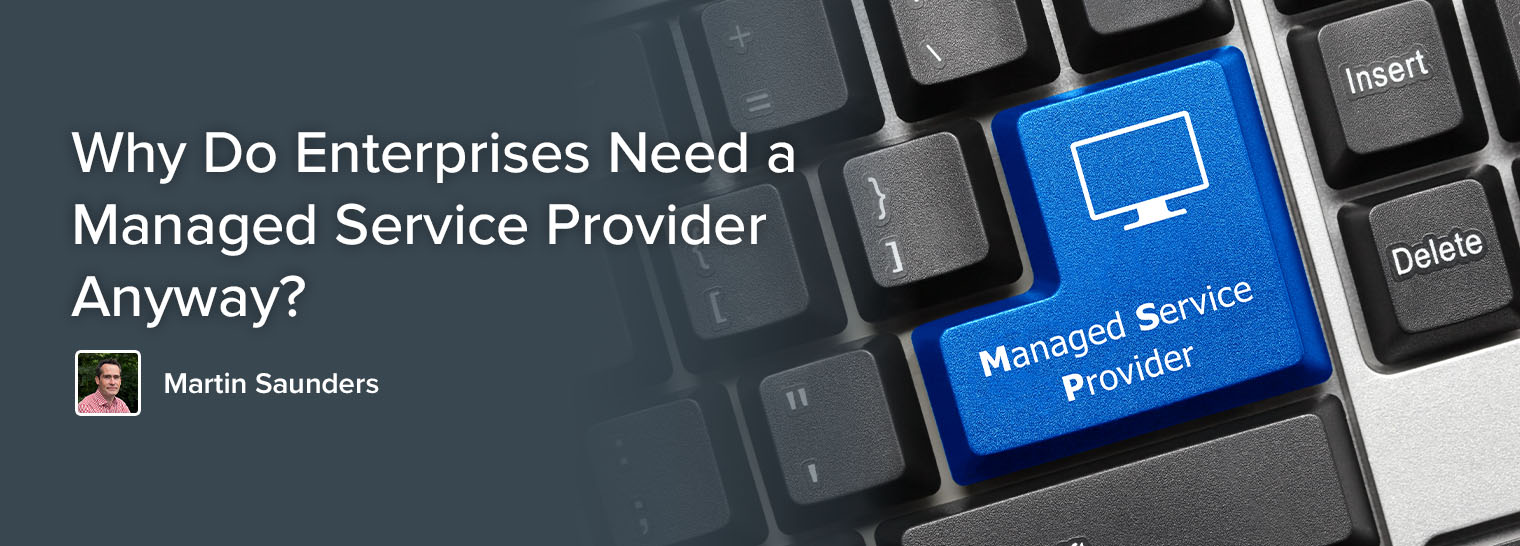Managed service providers seem essential to the functioning of almost every modern business, large and small. However, recent technical advances and commoditisation in the market are leading some enterprises to revisit the question of how Managed Service Providers (MSPs) fit into their organisation, and even whether they’re necessary for today’s environment.
In this series of articles, Highlight aims to find the answer to this question. To start exploring this issue, we must go back to square one, and ask the fundamental question – What is the point of a managed service provider?
How did the concept of managed service providers develop?
Technology service providers have existed for a long time. In the telecoms industry, these technology providers became known as Internet Service Providers (ISPs) by the mid-1990s.
These early ISPs were primarily technology and infrastructure aggregators. They spent money building internet infrastructure (networks, data centres and the OSS and BSS needed to run them) and then let customers access these systems in exchange for a simple monthly fee.
In short, the initial ‘service’ provided by ISPs was renting and facilitating access to the network infrastructure that was too expensive for their customers to own exclusively themselves. These early ISPs were focused on highly technical customers. However, as the market grew and internet usage became commonplace, it became clear that a much bigger market was available if a wider range of services could be made easy to use for less technically-orientated organisations and people.
In the late 1990s, many business-focused ISPs started to expand their portfolio, adding managed service wraps of other related technologies. They started to call themselves Managed Service Providers (MSPs) to distance themselves from simple ISPs. Our MSP, then, is a mix of technology and service. The value they represent is both providing rented access to an otherwise expensive asset and, importantly, adding in a level of service so that customers don’t have to maintain expertise in the growing list of technologies their business relies on. This dependence leads to the final point in the MSP triangle – the trust that is essential if this relationship is to work.
Now we’ve outlined what an MSP “is”, let’s see how that meshes with the requirements of a business operating in today’s world.
What IT challenges can MSPs solve for businesses?
For a business, staying competitive in any industry is a complex task. It’s widely recognised that the most important thing a business can do is focus on what makes them different. Technology can help with both efficiencies and coping with change, but the business must be able to exploit technology quickly and not let it be a distraction or drain on resources – financial or human – even while trends in society and industry demand evermore connected ways of doing business.
Most businesses cannot maintain the expertise or resources to fully exploit technology like this. And even if they wanted to try, economies of scale dictate they simply wouldn’t have the buying power to make it cost-effective. Add to this a growing scarcity of good engineers to build and manage this technology and the danger of distraction from core business activities.
You can see that MSPs should be pushing on an open door here. They have both the buying power and influence over technology vendors to make sure they can provide connectivity services at a reasonable cost. They should also have large teams of experts and engineers to ensure technologies are combined successfully and managed efficiently.
And yet… businesses are trying to go it alone
More and more, the industry is seeing businesses trying to leave MSPs behind, trying to buy their own bandwidth and equipment. Basic connectivity technology has become ubiquitous and far cheaper, all whilst software-defined network management has introduced the potential for much simpler network infrastructure.
This shift in technology has created downward pressure on pricing. The market is responding to this trend with SD-WAN vendors, in particular, getting traction by telling potential customers that they can utilise their SD-WAN products, ditch managed service providers and self-manage whilst saving money. Consequently, businesses start focussing on price in their RFPs and MSPs need to lower their prices if they want to win or retain customers.
To stay profitable, many MSPs cut back on the more intangible aspects of the project – service. It’s expensive keeping service managers and solution designers on the payroll and these roles are often spread thin in favour of automation. The human, conversational aspect of the MSP-customer relationship withers and customers start feeling that all they’re getting is bandwidth anyway, so why pay more? It’s just a commodity. It becomes a self-reinforcing cycle.
Customers want more than buying power and technology aggregation
All is not lost, though. Most businesses find that self-management isn’t quite the panacea that was promised. It brings its own problems, such as creating a disconnect between, for example, SD-WAN technology vendors and their broadband service providers. Those businesses still have a desire for somebody to take the pain of connectivity management for them. MSPs just need to convince potential customers that they can be trusted to do so by providing solutions that don’t just depend on commoditised technology resale.
Critically, it’s the ‘managed service’ of an MSP that forms the key to providing real value to its customers. The more a service provider can successfully take on managing a customer’s connectivity, the more time that customer will have to focus on what really matters to them. Successful service management demands that an MSP builds a company culture that views customer conversations as opportunities to further collaboration, rather than something to be feared.
The MSP should also utilise a service assurance platform to proactively keep track of the various service solutions and, in an ideal world, contact customer IT teams about issues before they know about them. They should also highlight to the customer how the service is performing, and what needs to change, and track those changes to ensure that the service is optimal in terms of both performance and cost-effectiveness.
The way to MSP actualisation
The ultimate service provider should be as transparent as possible with everything going on. Essentially, they should act like a virtual member of the enterprise IT department, earning the customer’s trust by taking full responsibility for the infrastructure they’re responsible for, working hand in hand with the rest of the customer IT teams and dealing with problems, not pointing fingers. Embedding themselves in the customer like this provides huge benefits.
Creating a service and organisational structure that customers trust requires an ongoing organisation-wide effort from an MSP to fully engage with the people and systems relating to their services. This is fundamentally more challenging than reselling technology and managing the nuts and bolts. If they get it right, however, MSPs can establish and maintain long-lasting customer relations, justifying the need for their services in the age of commoditisation and self-management.
Subscribe to our newsfeed to read the next article in our series, “MSPs and the three pillars of trustworthiness”, and learn how MSPs can start to steer their service to retain the trust of their customers over the long term.


